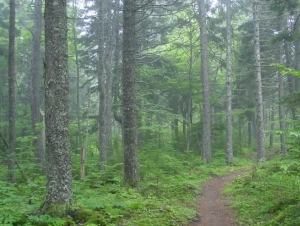
Deforestation in Canada and Other Fake NewsCanada is not running out of trees. Nor is deforestation occurring on a massive scale. In fact, Canada has one of the lowest deforestation rates in the world and surprise, surprise, the forest industry is not the major cause.  The first is the myth that saving paper saves trees. Although it can seem counterintuitive, research shows that using paper and wood products is an essential component in maintaining forested land.
The first is the myth that saving paper saves trees. Although it can seem counterintuitive, research shows that using paper and wood products is an essential component in maintaining forested land.
May 1, 2019 (Two Sides) - John Mullinder started his journalistic career in New Zealand before emigrating to Canada in the mid-1980s. Over the past 27 years, Mr. Mullinder has led a national environmental council for the country's paper packaging industry. Frustrated by encounters with people who knew so little about forestry and paper production but had plenty of opinions about killing and saving trees, John was compelled to write a book called, Deforestation in Canada and Other Fake News. “Many people believe that cutting down trees is deforestation and the emotional image they associate with this is an ugly clear cut,” states Mr. Mullinder. “I debunk these myths with hard facts, well-documented evidence, references and real images of deforestation.” Deforestation is often incorrectly defined and associated with the forestry products industry. In reality, deforestation is defined as the permanent destruction of forests to make the land available for other uses. One reason Mr. Mullinder chose to show an agricultural scene on the cover of his book is to point out that the primary causes of deforestation are due to agriculture, oil and gas projects, and urbanization. Information from Two Sides and Dovetail Partners helped to debunk myths that are key to understanding the value of supporting the forestry and paper industry.
We asked Mr. Mullinder what he thought the biggest challenges were to combat the misinformation around the forestry industry. He believes that the reach and impact of negative visual images and widespread misinformation on social media influences the reader's perception, especially the younger generation. Although the forest and paper industry has greatly improved its environmental performance over the past 50 years, there is still a great deal of work to be done to combat the distorted information. Mr. Mullinder believes the industry needs to continue to aggressively educate the public through organizations like Two Sides, to establish credibility while telling the strong story about the renewability, sustainability, and recyclability of forestry and paper. Click here for more information about John Mullinder or to learn more about his book. Two Sides is an independent, nonprofit organization created to promote the sustainability of print and paper. Two Sides is active globally in North America, Europe, Australia, South Africa, Brazil and Colombia. To learn more, please visit: www.twosidesna.org. SOURCE: Two Sides North America |